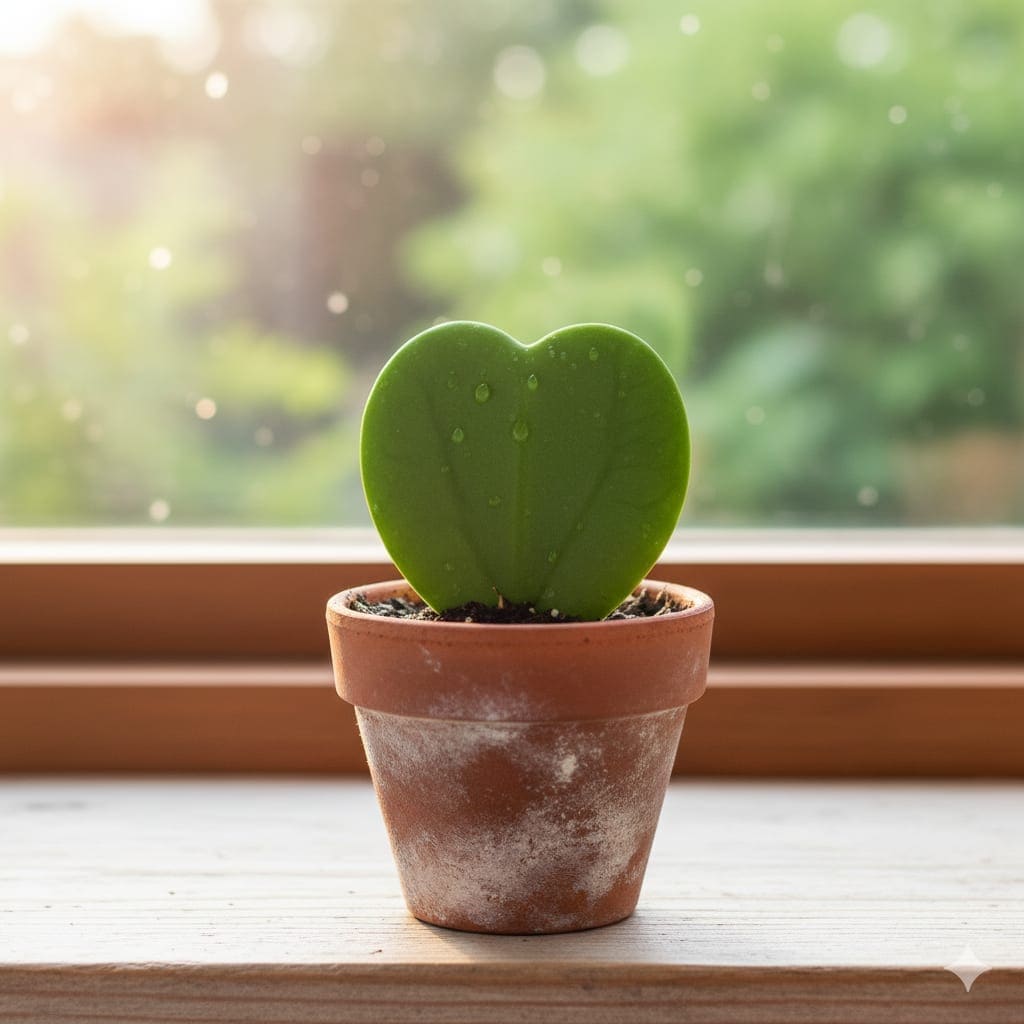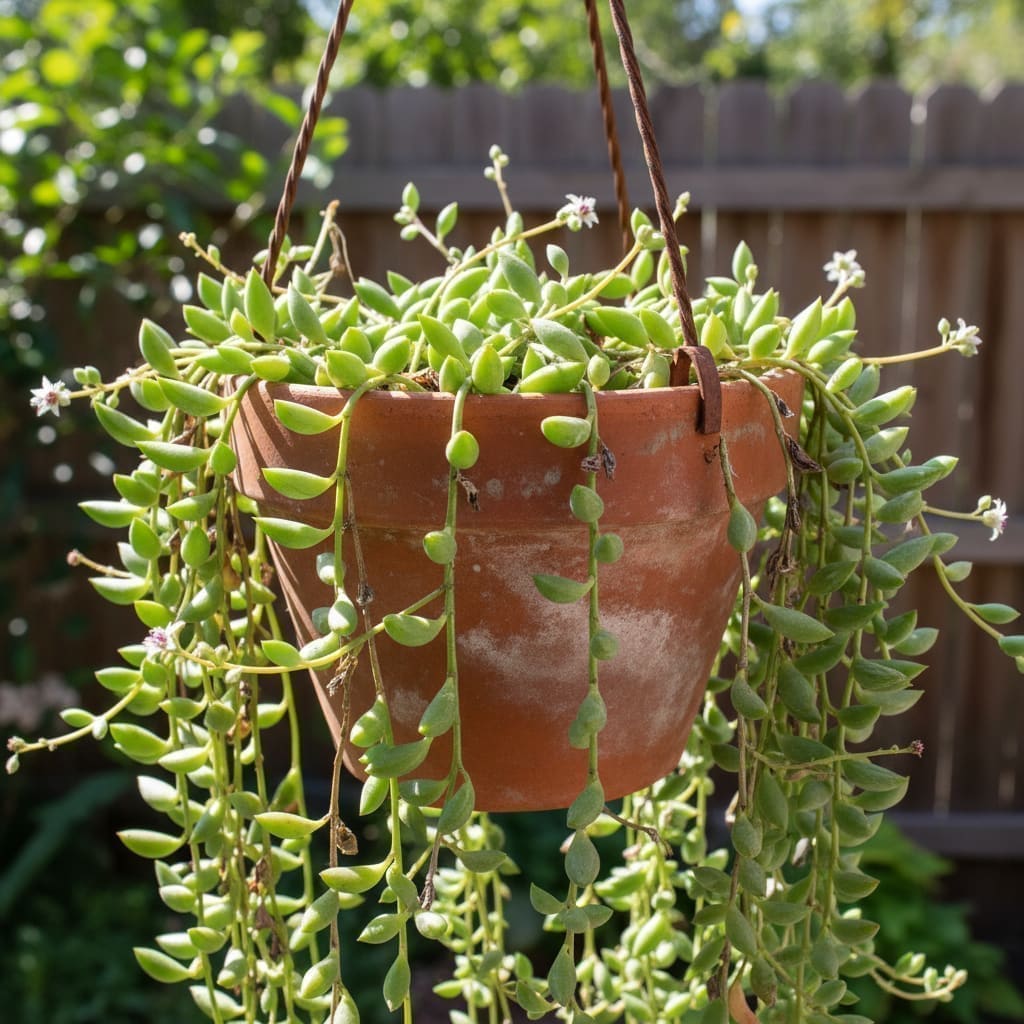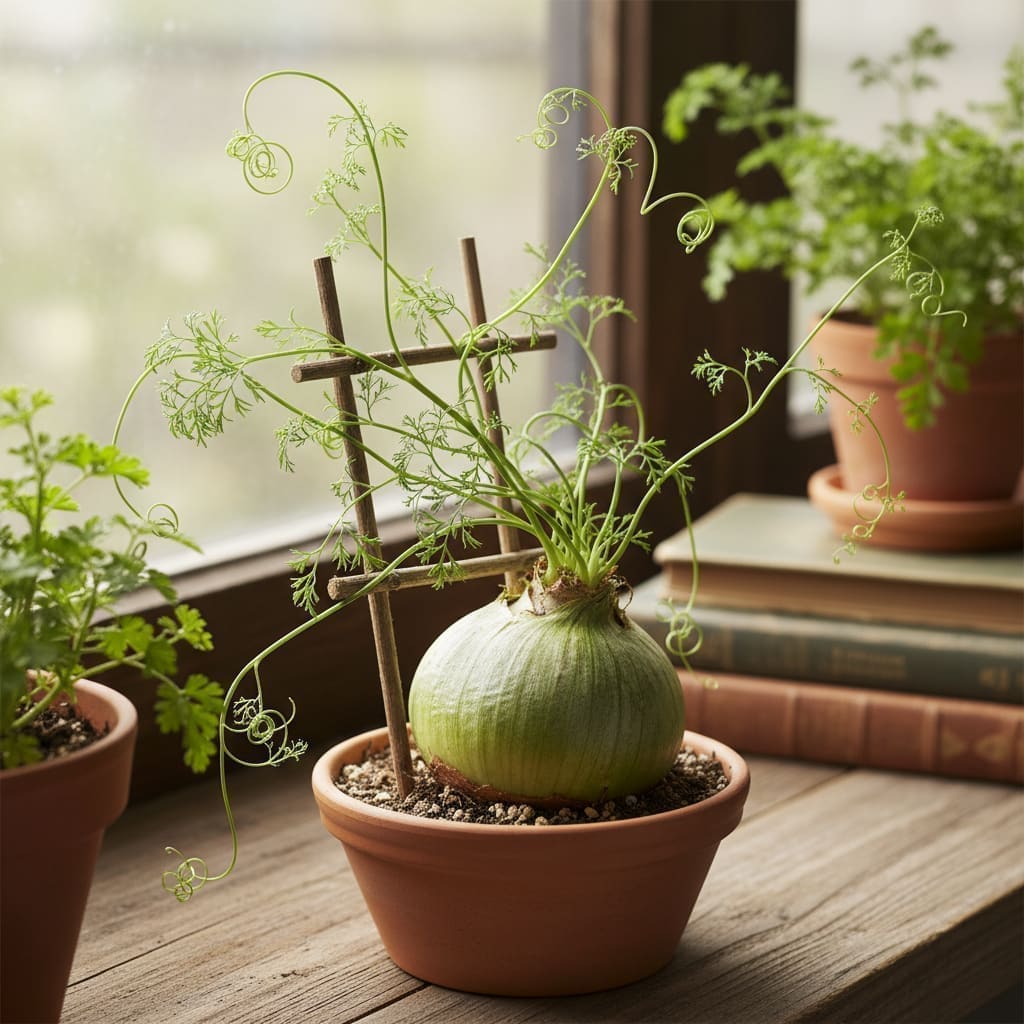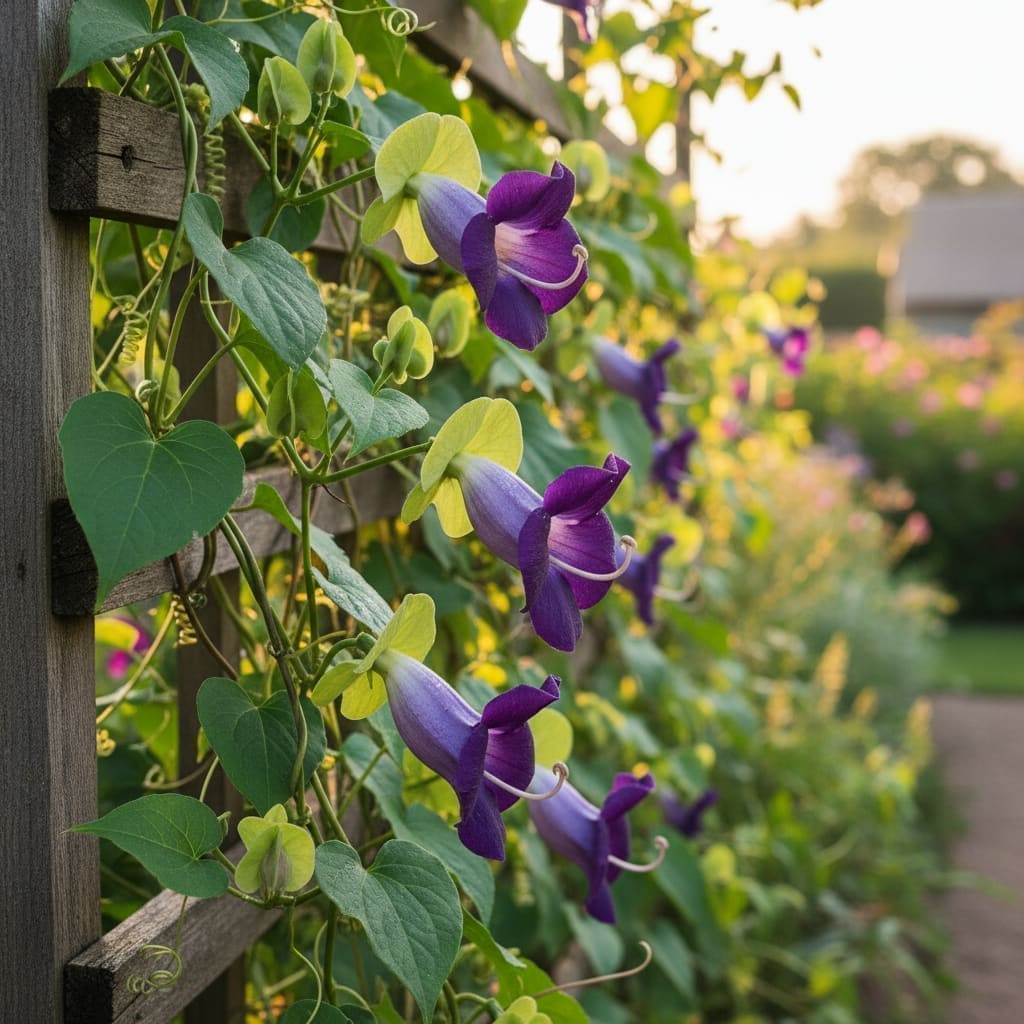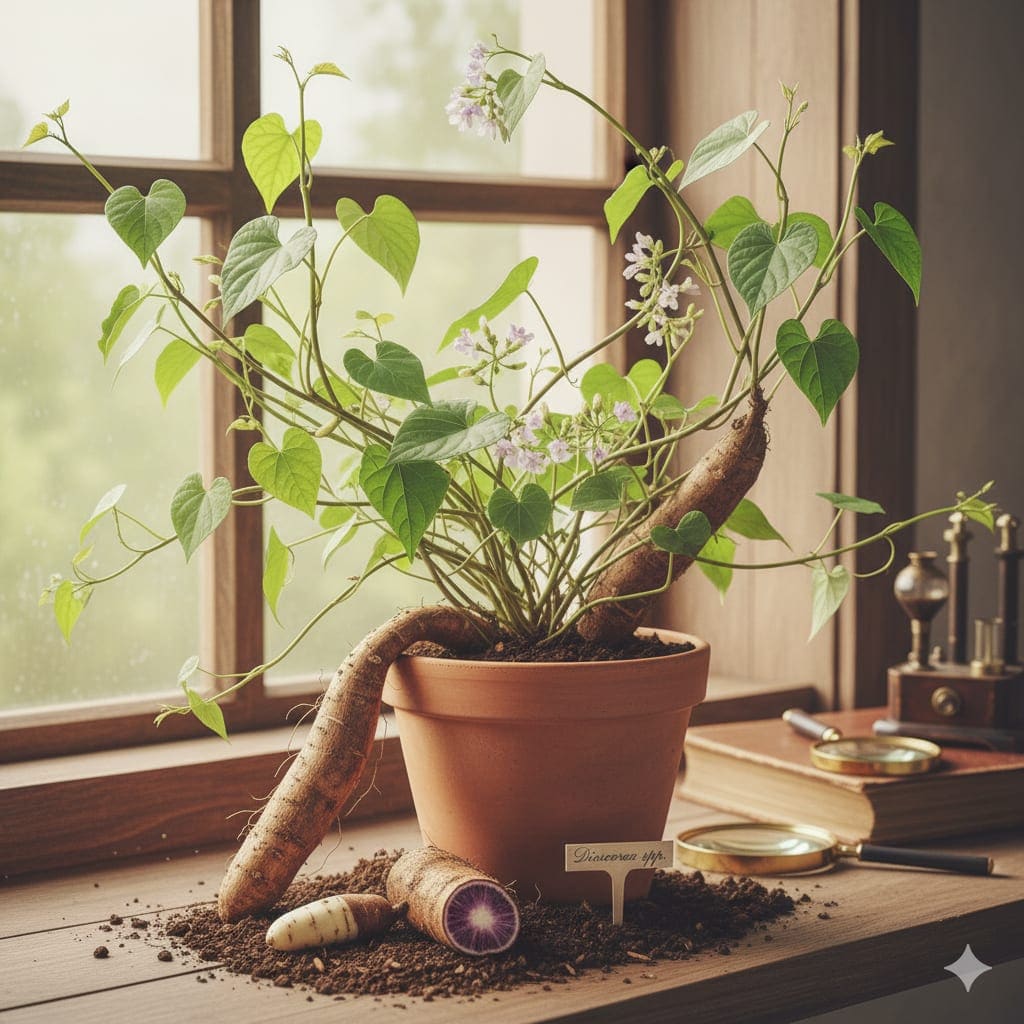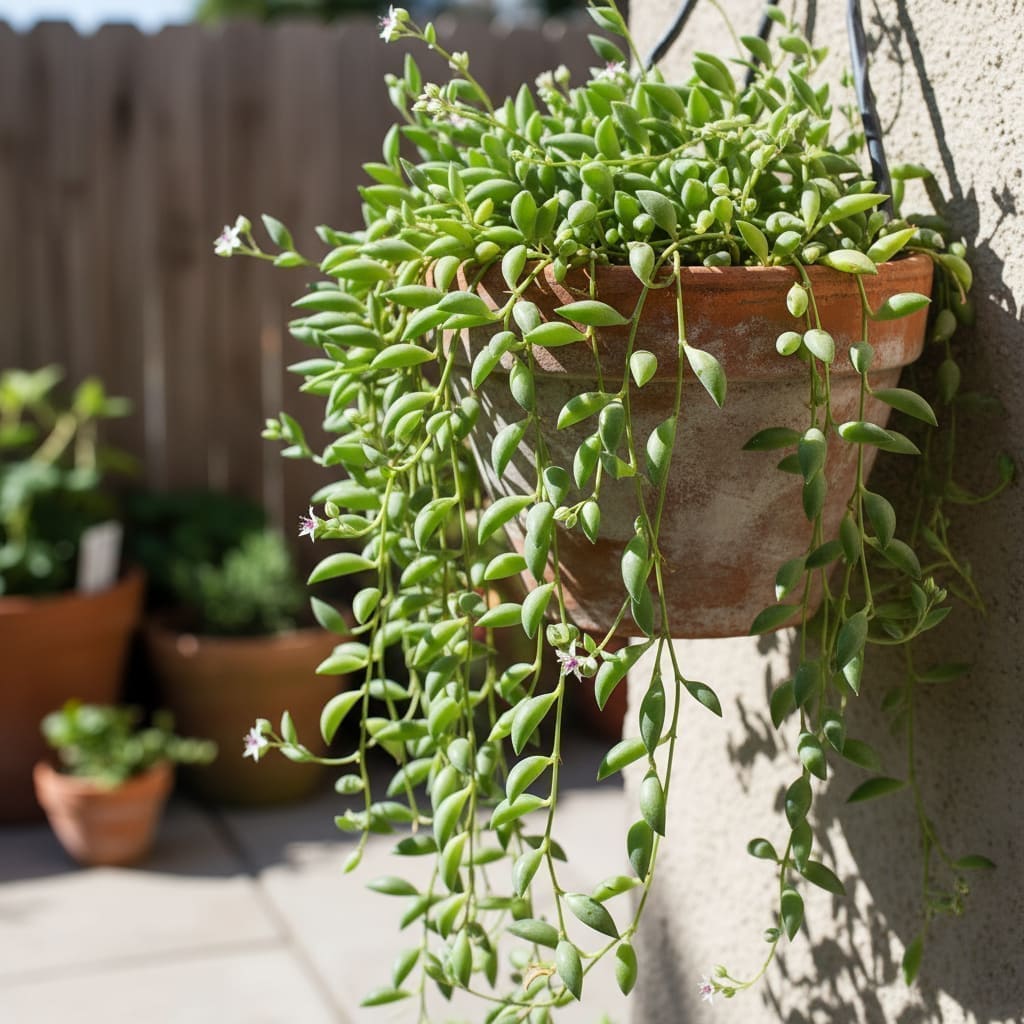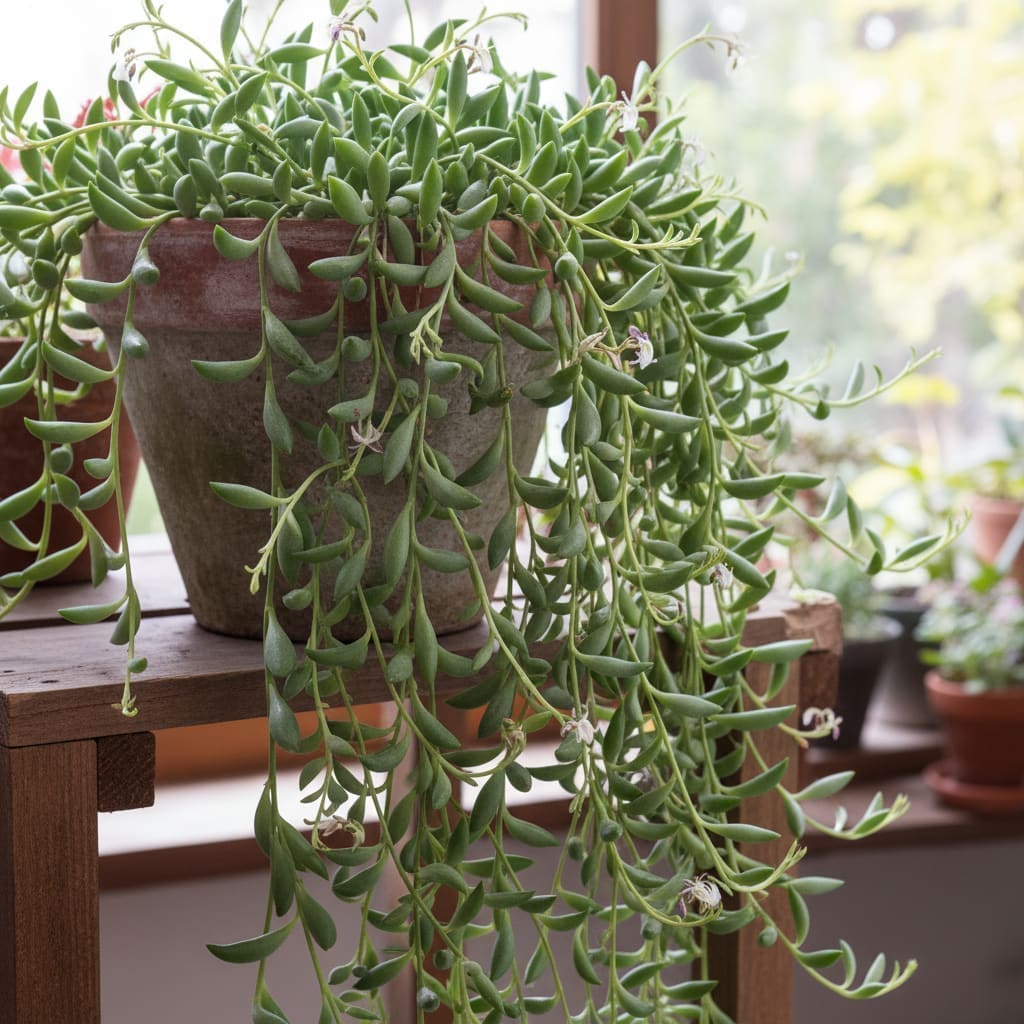Hoya kerrii Care & Growing Guide
Overview
Hoya kerrii, also known as the Sweetheart Plant or Valentine Hoya, is a slow-growing tropical succulent vine native to Southeast Asia. Its distinctive heart-shaped leaves make it a popular ornamental houseplant, especially as a symbolic gift. In its natural habitat, this epiphytic species climbs trees, using its thick, waxy foliage to store water and withstand dry periods. It belongs to the Apocynaceae family and is prized for its long lifespan and low-maintenance nature when grown indoors.
Fun fact: Because of its romantic leaf shape, single-leaf cuttings of Hoya kerrii are often sold around Valentine’s Day as a token of love and affection.
Identification & Growth Habit
Hoya kerrii is a trailing or climbing plant with thick, succulent-like leaves that are perfectly heart-shaped, measuring 2–3 inches (5–8 cm) across in young plants and larger on mature specimens. The leaves are bright to deep green, sometimes with variegation. In the wild, it can climb several meters, attaching itself to supports with twining stems. Indoors, it can be trained to climb a trellis, moss pole, or allowed to cascade from a hanging basket.
Growth is slow—especially in single-leaf cuttings, which may remain static for months or years before producing new shoots. Once established from a multi-node cutting, the plant develops long vining stems and, under optimal conditions, clusters of star-shaped, fragrant flowers.
Light & Placement
Provide several hours of bright, direct sunlight daily for optimal growth. A south- or west-facing window is ideal, though in very hot climates, some light shading during peak midday sun can prevent leaf scorch. If natural light is insufficient, supplement with a full-spectrum LED grow light positioned 6–12 inches above the plant for 10–12 hours per day.
- Best indoor location: Sunny windowsill with unobstructed exposure.
- Outdoor placement: Bright, sheltered patio spot with morning or late afternoon sun.
Watering & Humidity
Hoya kerrii’s thick leaves store water, making it highly drought-tolerant. Allow the soil to dry thoroughly between waterings. In summer, water more frequently when growth is active; in winter, reduce watering significantly to avoid root rot.
- Check leaf firmness: plump leaves indicate adequate hydration.
- Water deeply, then let excess drain away completely.
Average household humidity is sufficient, but the plant will appreciate increased moisture. Use a humidifier or place it in a naturally humid room, such as a bathroom with bright light, to mimic its native tropical environment.
Soil & Repotting
Use a well-draining potting mix designed for succulents or cacti. A blend of peat moss, perlite, and coarse sand works well. This prevents waterlogging and reduces the risk of root rot.
Repotting is rarely needed due to slow growth. Only repot when the plant has clearly outgrown its container or the potting mix has broken down. Choose a pot with drainage holes and only one size larger than the current container.
Fertilizing
During the active growing season (spring and summer), feed monthly with a balanced liquid fertilizer diluted according to the product label. Reduce or stop fertilizing during the fall and winter when growth slows.
Pruning & Training
Pruning is minimal but can help maintain shape and encourage branching. Use clean, sharp scissors to trim leggy or damaged stems. For climbing growth, train stems onto a trellis, hoop, or moss pole, gently securing with plant ties. Avoid removing the short spurs where flowers form, as these can rebloom in subsequent years.
Propagation
Hoya kerrii is best propagated from stem cuttings with at least one node. Single-leaf cuttings will root but often do not produce new growth.
Step-by-Step Propagation
- Select a healthy vine with at least one or two nodes and a few leaves.
- Cut just below a node using sterilized scissors or pruners.
- Remove the lower leaf to expose the node.
- Place the cutting in water or a well-draining potting mix (peat and perlite blend).
- If rooting in water, change the water every few days; if in soil, keep slightly moist but not soggy.
- Provide bright, indirect light and warmth (70–80°F) until roots develop (typically several weeks).
- Once roots are 1–2 inches long, transplant into a small pot with succulent mix.
Common Problems
Pests
- Mealybugs: White, cottony clusters on leaves and stems. Remove with cotton swabs dipped in alcohol and treat with insecticidal soap.
- Spider mites: Fine webbing and stippled leaves. Increase humidity and treat with miticide or insecticidal soap.
- Scale insects: Brown, shell-like bumps. Scrape off gently and treat with horticultural oil.
Diseases
- Root rot: Caused by overwatering and poor drainage. Remove affected roots and repot in fresh, well-draining mix.
- Leaf yellowing: Often due to excess water or insufficient light. Adjust care accordingly.
Toxicity & Pet Safety
Hoya kerrii is considered toxic if ingested by pets or humans. Keep it out of reach of cats, dogs, and children, and seek veterinary assistance if ingestion is suspected.
Styling & Decor Tips
- Display as a hanging plant to showcase trailing vines.
- Train on a heart-shaped trellis for thematic appeal.
- Pair with decorative ceramic pots to highlight the leaf shape.
- Use in bright kitchens or sunrooms for a tropical accent.
Varieties & Cultivars
- Hoya kerrii variegata: Cream or yellow variegation along leaf edges.
- Hoya kerrii 'Reverse Variegata': Variegation in the leaf center.
- Hoya kerrii 'Splash': Leaves speckled with silvery flecks.
Buying Tips & Maturity
When purchasing, choose plants with multiple leaves and nodes for faster growth. Single-leaf cuttings are decorative but may remain static for years. Inspect for healthy, firm leaves without spots or pests. Mature plants with established vines are more likely to flower under proper conditions.
Seasonal Care
- Spring/Summer: Active growth; water when dry, fertilize monthly, provide maximum light.
- Fall: Gradually reduce watering and feeding as growth slows.
- Winter: Minimal watering; ensure bright light and protect from cold drafts.
FAQ
- How fast does Hoya kerrii grow? Very slowly, especially from single-leaf cuttings. Multi-node cuttings grow faster once established.
- Will my single-leaf Hoya kerrii grow vines? Not always; many remain as a single leaf indefinitely without a node.
- Does Hoya kerrii flower indoors? Yes, but only mature, well-lit plants typically bloom, producing fragrant star-shaped clusters.
- Can I grow Hoya kerrii outdoors? In warm, frost-free climates, it can be grown outdoors in bright light with protection from heavy rain.
- What’s the best pot for Hoya kerrii? A small, shallow pot with drainage holes to prevent excess moisture around the roots.
